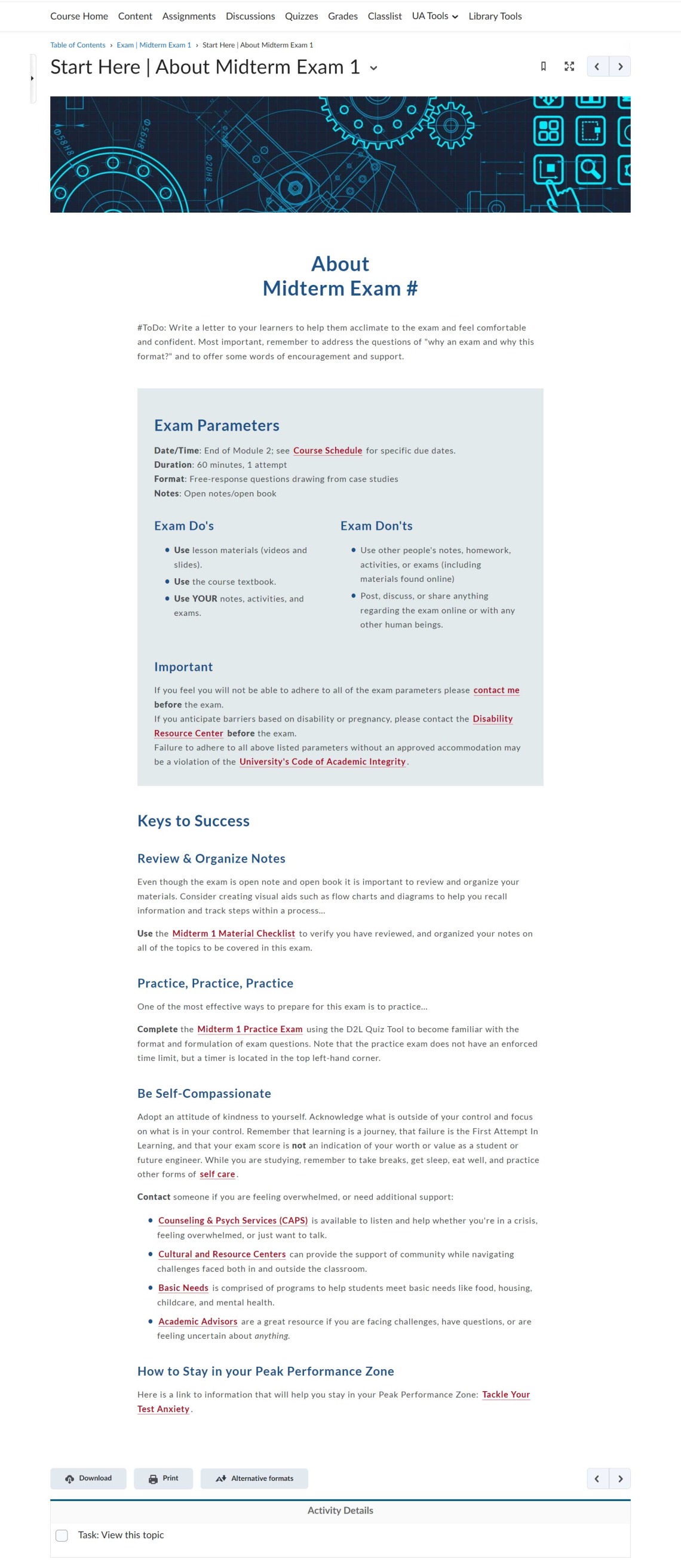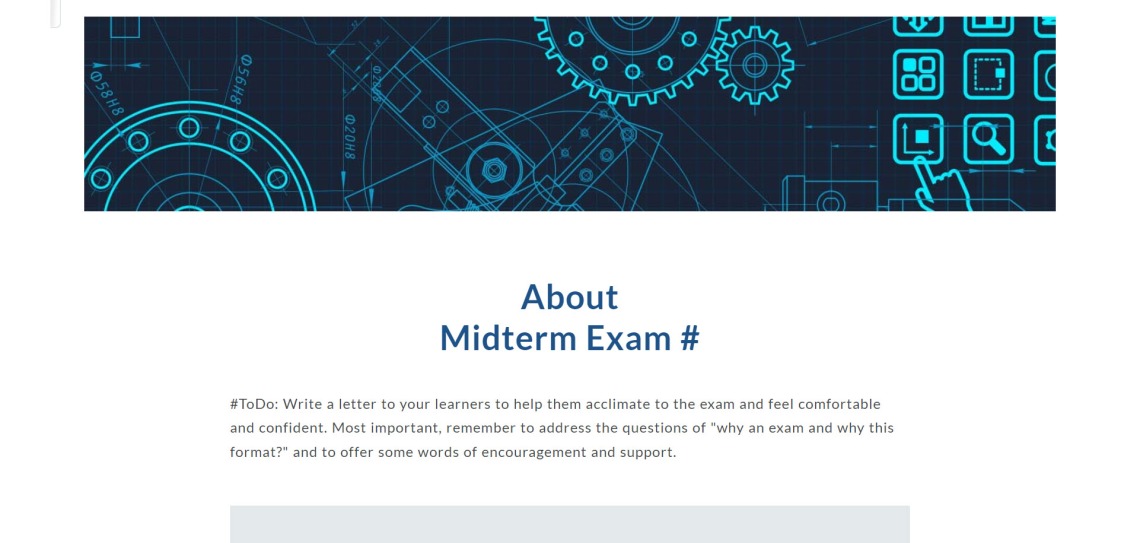Designing for the Whole Student
Instructor Sherilyn Keaton takes a learner-centered approach to design instructional resources that support students' basic, psychological, and academic needs.

Learner success is dependent on factors that extend beyond academic preparedness and hard work. In the May 2021 Student Voice survey from Inside Higher Ed and College Pulse, with support from Kaplan, fifty percent (50%) of participating students identified “mental health” as a source of concern regarding their ability to “complete coursework and get good grades.” Eighteen percent (18%) of participating students identified “housing” as a source of concern. These findings align with the adage, “Maslow before Bloom,” which recognizes that learners’ basic and psychological needs (i.e. physiological, safety, belonging, and esteem needs) must be met before they can fully engage with learning. What might we, as educators, do to attend to and ameliorate these, often hidden, student struggles?
I recently worked with Sherilyn Keaton, Professor of Practice in the College of Engineering’s Systems and Industrial Engineering department, to redesign one of her courses for an asynchronous online delivery. Informed by her experience leading diverse teams in the corporate world, Sherilyn’s teaching philosophy positions the professor as facilitator first, and content expert second. She sees her role in the course, not as a “sage on the stage” but as a “guide by the side,” promoting learner mastery and autonomy, and removing obstacles that may impede learner progress.
To provide targeted student support, Sherilyn relied on learner-centered dialogue that occurred organically during synchronous course meetings; a strategy unconducive to asynchronous online learning environments. Therefore, a major part of the redesign was focused on infusing course materials with relevant and timely resources that would support the “whole student,” including their physiological, safety, belonging, and esteem needs.
"About the Midterm" Page
Sherilyn’s course includes several scenario-based, open-note/book exams to offer students the opportunity to demonstrate mastery of course concepts. Each exam, delivered through the D2L Quiz Tool, is posted to an exam module with the “About the Midterm” page serving as an introduction. The purpose of this page is to instill the learner with confidence - confidence in their understanding of the exam experience, and confidence in their abilities - by offering relevant support resources. To address this, we constructed three sections - (1) letter to the learner, (2) exam parameters, and (3) keys to success.

A screenshot showing About the Midterm Page.
Section 1: Letter to the Learner
The first section of the page is the “letter to the learner.” It is similar to an introduction, but goes a bit deeper by offering the learner a note of encouragement. While Sherilyn strives to increase engagement, readability, and consumption of course materials through brevity, she opted to make this section a bit longer. This provided her the space to:
- Provide a short overview of the type of assessment being used.
“This exam is delivered using the D2L Quiz Tool and will include one or more Case Studies to provide background on the problem(s) to be solved…” - Include an explanation of the assessment design, focusing on the “why.”
“The exam is comprehensive because our knowledge is not segmented, but built on previous learning…” - Write some words of encouragement.
“I know exam time can be a stressful time, but please know that I believe in your ability to do well on this exam...” - Offer support.
“If you have any questions or concerns, please email me as soon as possible…”

A screenshot showing Section1: Letter to the Learner.
Section 2: Exam Parameters
This section provides learners with essential exam information - dates, length, format, rules of engagement, etc. Since student success is dependent on understanding these stated parameters, the section is highlighted to make it stand out.
The exam parameters section also includes information about seeking support and accommodations for the exam through two avenues - (1) the Disability Resource Center, and (2) the instructor. While reflecting on the inclusion of these services, Sherilyn stated, “I had kept these separate and in only one place on my existing in-person course sites [i.e. the syllabus], so I thought I had it covered. I no longer believe that.”
Research shows that to avoid negative perceptions and stigma, students with non-visible disabilities may refrain from disclosing their disability status, only doing so when their coursework is negatively affected (Figueroa, 2021). Additionally, students may encounter barriers to exam success that extend beyond disability status. Students may be reluctant to disclose illness and family emergencies, local and natural disasters, housing and financial insecurities, etc. that may pose intermittent challenges to their success. Including relevant and timely references to the DRC and instructor-provided support may help normalize the accommodation process and create a positive and welcoming environment for all students.

A screenshot showing Section 2: Exam Parameters.
Section 3: Keys to Success
The Keys to Success section outlines the resources available to learners to help them prepare for the exam. This section includes both content-related resources such as a study checklist and practice exam, as well as non-academic resources that can help support students’ basic and psychological needs. For the content-related resources we felt it was critical to provide students with context - how will these resources help them succeed and how should they be used. We transitioned into the non-academic resources from the perspective of being self-compassionate:
"Adopt an attitude of kindness to yourself. Acknowledge what is outside of your control and focus on what is in your control. Remember that learning is a journey, that failure is the First Attempt In Learning, and that your exam score is not an indication of your worth or value as a student or future engineer. While you are studying, remember to take breaks, get sleep, eat well, and practice other forms of self care."
Sherilyn recognizes that her learners are “more than capable of understanding the material and performing well. When there is an issue, it is typically related to a life struggle they are going through. I want to make sure I am providing quick access to support throughout the course site.” To this end, links to relevant University support services were included:
- Counseling & Psych Services (CAPS) is available to listen and help whether learners are in a crisis, feeling overwhelmed, or just want to talk.
- Cultural and Resource Centers can provide learners with the support of community while navigating challenges faced both in and outside the classroom.
- Basic Needs is comprised of programs to help learners meet basic needs like food, housing, childcare, and mental health.
- Academic Advisors are a great resource if learners are facing challenges, have questions, or are feeling uncertain about anything.
- Tackle Your Test Anxiety includes resources to help learners stay in their Peak Performance Zone.

A screenshot showing Section 3: Keys to Success.
The Take-Away
When adding learner support resources to a course, look beyond the syllabus and Start Here module. Integrate learner support resources across a course site in a way that makes learners feel seen and heard. Consider taking time to create resources that validate learner experiences and feelings, and that normalizes seeking and receiving all forms of support.


